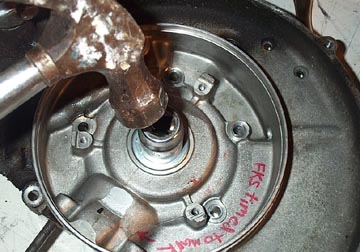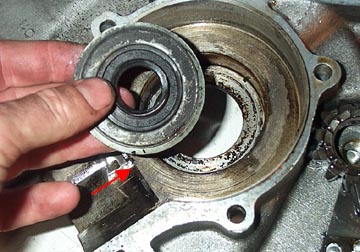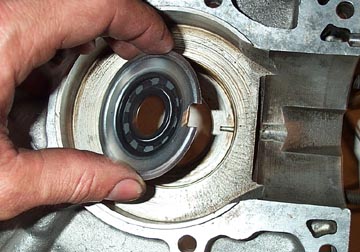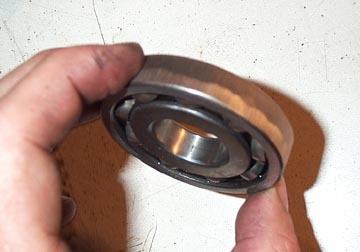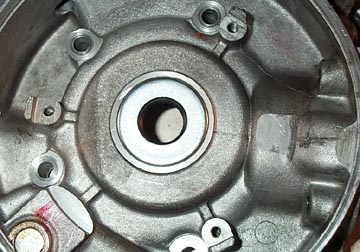 |
 |
 |
 |
 |
 |
 |
||||||||||||
Vespa Pre 1979 Large Frame Engine Work |
Oil Seals: Flywheel SideThere are three main oil seals in a older Vespa engine:
There are also some more minor seals around the kickstart quadrant, the clutch cover, and the rear wheel back plate. The main seals should be replaced every time the engine is taken apart as they are cheap to buy but they are buried pretty deep in the engine. If you have the engine apart you might as well drop them in. Flywheel side seal: The flywheel oil
seal on an older model large frame bike
is different to the P series equivalent. The main difference is that
the engine uses the same large bearings on both sides of the crank and
both main bearings are lubricated by the gasoline/oil mix. On P series
bikes the clutch side main bearing is actually lubricated by the
transmission oil because the oil seal is located between the crank and
the bearing...Anway... The following images assume you have
already dropped the engine and
split the cases.
Once the casings are split you can flip
over the flywheel side casing and use a large socket to remove the seal
by tapping it through the casing. It doesn't matter if it gets damaged
as it is going in the trash. |
|||||||||||||||||
